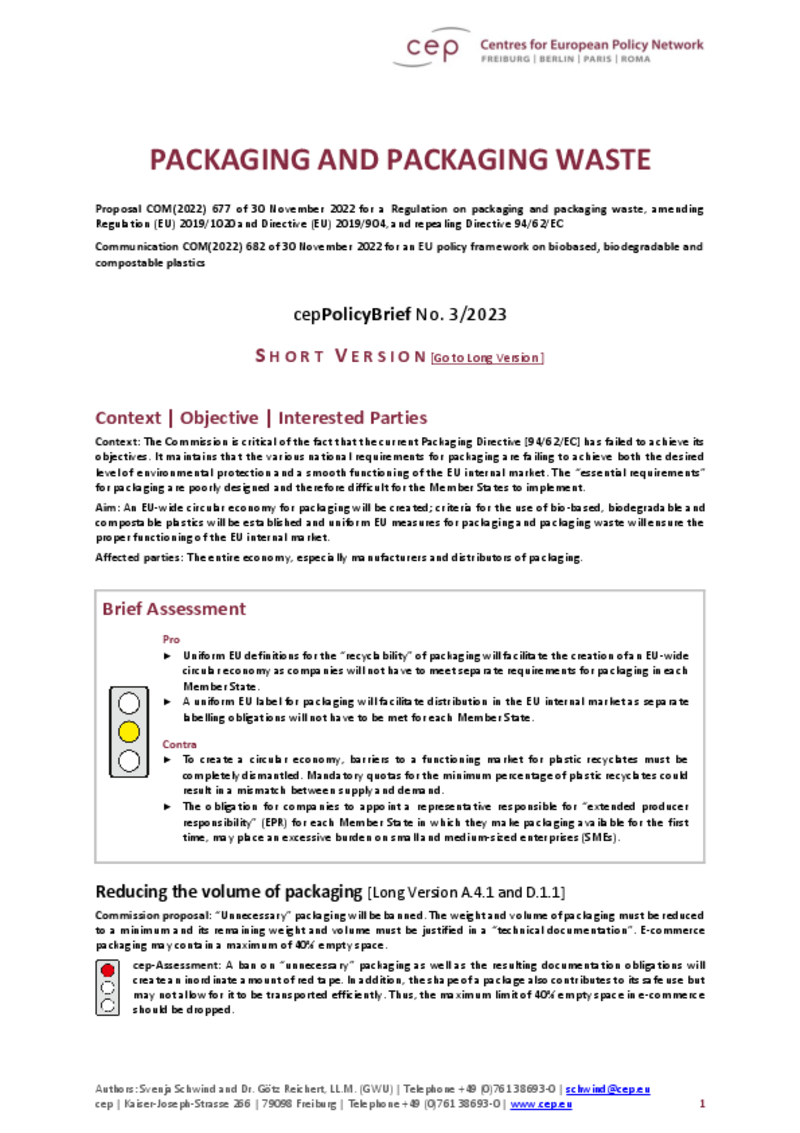
Environment
Packaging and Packaging Waste (cepPolicyBrief COM(2022) 677)
cepPolicyBrief
”Given the size of the internal market, companies would theoretically be able to reduce costs and open up new markets. However, there are still too many individual national regulations standing in the way,” says cep environmental expert Svenja Schwind, who analysed the Commission’s draft with cep lawyer Götz Reichert.
The planned uniform EU requirements for packaging design and labelling facilitate the cross-border movement of goods. “But as long as member states can continue to set additional requirements for packaging, there is a risk that the EU internal market will remain fragmented and consequently will not be able to fully develop its potential for the emergence of an EU-wide circular economy – to the harm of economy and environment,” emphasises Svenja Schwind.
Finally, Schwind and Reichert warn against excessive bureaucracy. For example, the documentation requirements for the ban on ”unnecessary” packaging create an immense administrative and cost burden for companies. The same applies to the obligation of packaging manufacturers to appoint an “extended producer responsibility” representative for each Member State in which they place packaging on the market for the first time. This could effectively block access to the EU internal market, particularly for small and medium-sized enterprises (SMEs).





